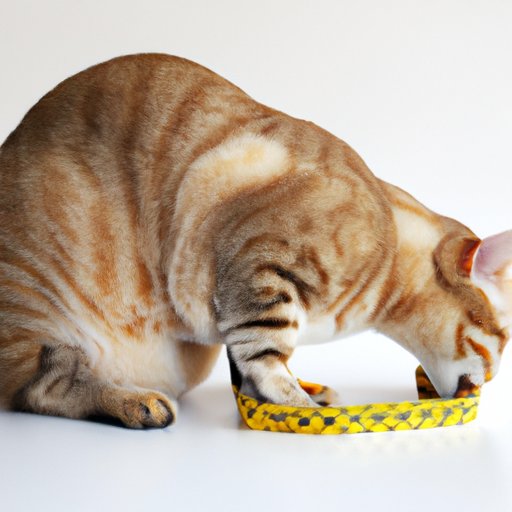
I. Introduction
As a cat owner, you want your feline friend to live a long, happy life. One way to support your cat’s overall health and well-being is to maintain a healthy weight. Just like humans, cats can suffer from health problems if they are overweight or underweight. In this article, we will explore what is a healthy weight for a cat, discuss the risks of obesity, and provide tips for keeping your feline friend fit and happy.
II. The Importance of a Healthy Weight for Your Feline Friend
Maintaining a healthy weight is crucial to your cat’s health and happiness. When your cat is at a healthy weight, they are less likely to develop chronic health problems, live longer, and enjoy better overall quality of life. On the other hand, if your cat is overweight or underweight, they are at a higher risk of developing health issues, including joint problems, diabetes, and heart disease.
III. How to Determine if Your Cat is a Healthy Weight
So, how can you tell if your cat is at a healthy weight? On average, a healthy adult cat should weigh between 8-10 pounds. However, this can vary depending on their breed, age, and other factors. One way to evaluate your cat’s body condition score is to look at their overall body shape. A healthy cat should have a visible waistline, with ribs easily felt but not visible. Additionally, you can use a scale to track your cat’s weight at home.
IV. The Risks of Being Overweight: Understanding the Dangers for Cats
When cats are overweight, they are at risk for a variety of health problems, including diabetes, heart disease, arthritis, and urinary tract issues. Obesity can also shorten your cat’s life expectancy and reduce their overall quality of life. In fact, obese cats have a shorter life span than cats at a healthy weight. It is crucial to recognize the risks associated with cat obesity and take steps to prevent and manage excess weight.
V. Tips and Tricks for Keeping Your Cat at a Healthy Weight
To maintain a healthy weight for your cat, focus on portion control, meal frequency, and food quality. Stick to a consistent feeding schedule and measure your cat’s food to avoid overfeeding. Look for high-quality cat food that meets your cat’s nutritional requirements. Pay attention to food labels and avoid products that contain unhealthy additives or fillers. Additionally, monitor your cat’s weight and progress over time.
VI. Exploring the Connection Between Diet and Weight in Cats
In addition to portion control and food quality, diet also plays a role in weight management. There are various options for cat food, including wet, dry, raw, and homemade. While each type of food has its benefits and drawbacks, it is important to choose a diet that meets your cat’s specific nutritional needs. Homemade and natural diets require more preparation but can be a good option for some cats.

VII. Why Regular Exercise is Key to Maintaining a Healthy Weight for Your Cat
Regular exercise is essential for your cat’s health and can help maintain a healthy weight. Engage your cat in interactive play and provide physical toys to encourage exercise. Cats also enjoy climbing and exploring, so provide opportunities for them to move and play. By incorporating regular exercise into your cat’s routine, you can help them maintain a healthy weight and enjoy better overall health.
VIII. Understanding Obesity in Cats: Causes, Effects, and Solutions
Obesity in cats can be caused by various factors, including genetics, overeating, and a sedentary lifestyle. In some cases, underlying health conditions like thyroid issues can contribute to weight gain. To prevent and manage obesity in cats, focus on providing plenty of opportunities for exercise and maintaining a healthy diet. Work with your vet to develop a weight loss plan if your cat is already overweight. This may include changes to their diet, exercise routine, or medication.
IX. Conclusion
By understanding what is a healthy weight for a cat, recognizing the risks of obesity, and implementing practical strategies for weight management, you can help your feline friend live a long, happy, and healthy life. Remember to monitor your cat’s weight and health, choose a high-quality cat food, provide regular exercise, and seek veterinary care as needed. With these steps, you can keep your cat at a healthy weight and enjoy a strong bond and companionship for years to come.
Takeaway Message: A healthy weight is crucial to your cat’s health and happiness. By providing high-quality cat food, regular exercise, and proper weight management, you can promote a long and happy life for your beloved feline companion.




